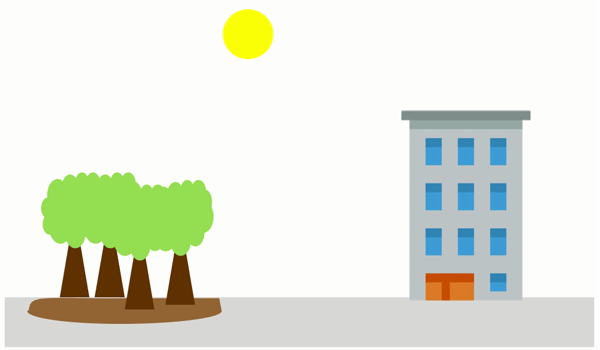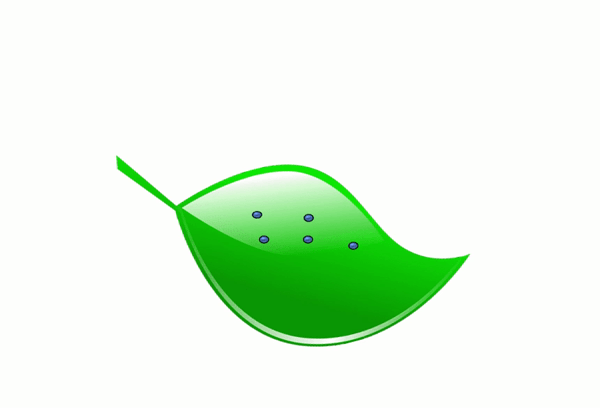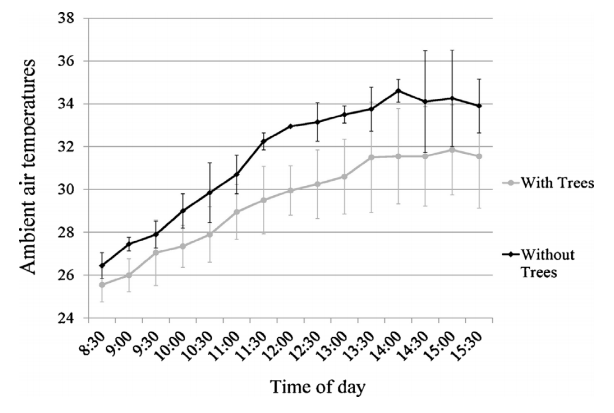I’ve spent many football (soccer) matches in the sweltering afternoon heat of India. Whether we win or lose, it’s always a relief to get under a tree after the match and stretch out. (But I only acknowledged this relief whenever my team won. I tend to be a bit preoccupied otherwise.) Of the many wonderful services trees provide us, cooling is a service that I am very grateful for.
We instinctively know that if we go under a tree when its hot, we’ll feel cooler. But…why? How does this work?
How do trees cool the air so effectively?
Intercepting sunlight…or as normal people call it, shading
Open ground, roads and buildings are great at absorbing the heat that falls on them, and reflect very little of it. That is why you can barely step on concrete barefoot. Phoenix, Arizona is famous for its Urban Heat Island. My uncle had been there a couple of years ago and was astounded that the soles of his shoes had almost melted after walking outdoors during the day!

Trees, with their canopies (the part comprising branches and leaves), block heat from reaching these surfaces. Tree canopies can intercept up to 90% of the sunlight—and the heat that comes with it. Some tree species with wider canopies, wider leaves, and more leaves are even more efficient. For example, beeches block up to 97% of the light that falls on them. Tropical trees with huge leaves are also super efficient, allowing only 1-2% sunlight to reach the ground. With less heat reaching below the tree’s canopy, the temperature stays low.
Technically, shade doesn’t cool the air. It just warms the air less.
The bulk of the “cooling effect” of trees is because of shading.
How does transpiration cooling work?
Trees draw up water from their roots and transport it to the leaves, where photosynthesis takes place. But up to 99% of the water that reaches the leaves is lost as water vapor when the stomata (openings on the leaf surface) open and close to exchange carbon dioxide and oxygen. This process is called transpiration, and the resultant cooling effect is called transpiration cooling.
Trees can lose between 70 and 120 liters of water in a day, depending on the size of their canopy and the area of their leaves. For example, the Silver Willow (Salix nigra) or the White Poplar (Populus alba) having a canopy size of 900 sq. feet (83.6 sq. meters) can lose up to 82 liters of water a day through transpiration.
How does this cooling effect happen?
To covert to water vapor, liquid water on the leaf needs extra energy, called latent heat. It draws this energy from the hot air around it as well as the sunlight that falls on it.

When water is lost as vapor through transpiration, more energy leaves the system than was drawn to convert water into water vapor. According to the law of conservation of energy, if the amount of energy entering the system is less than the amount of energy leaving the system, then the system cools to maintain equilibrium.
If we consider the area around the tree to be the “system”, this is how the process would work:

Why are we considering the entire tree as the system?
Usually, the cooling effect of evaporation is limited to the surface from which water evaporates. For example, our body also cools using the same mechanism. Our sweat evaporates by drawing heat from the skin, making us feel cooler.
But with trees, the cooling effect is felt below and around the canopy for three reasons. First, all the leaves are transpiring together as one unit: the canopy. An immense amount of water is evaporating from the canopy—between 70-120 liters a day—drawing in heat energy from all around the canopy.
Second, more stomata are present in the lower surface of a leaf. This makes the cooling effect under the canopy more pronounced.
Third, water is also evaporating from the soil under the tree, cooling the ground. This process is called evaporation cooling. The two processes of transpiration cooling and evaporation cooling work together to cool the surrounding air and ground.
Researchers have experimentally proven trees’ cooling effect in cities…
Vailshery, Jaganmohan and Nagendra 2013 conducted a series of studies between 2009 and 2010 on 10 major roads of Bengaluru, India. They assessed the ambient temperature and road surface temperatures throughout the day on sections of the road that had trees and that didn’t have trees. On Bellary Road (which connects the city to the airport) at 2 PM, ambient air temperatures were 34.5°C on sections without trees, as compared to 29.8°C under the shade of the trees.
times of day, for road segments with and without trees in Bangalore Source: Vailshery, Jaganmohan and Nagendra 2013
The road surface temperatures had a starker difference. At 3 PM, the thermometer read 51.5°C under the open sun compared to 32.5°C under the tree shade—a difference of 19°C! Various other studies have concluded that trees cool surrounding air anywhere between 2°C to 10°C1,2,3.
Conclusion: Can we use trees to cool cities?
If trees are planted close together in a continuous patch, they can cool temperatures by 5-10°C. This is a vital ecosystem service for urban areas. Planting trees along streets or having a rooftop garden can cool cities and is a proven way of countering the Urban Heat Island effect. It can also reduce your peak energy requirements, as many interesting studies have pointed out4.
We can also borrow the trees’ cooling mechanism to cool our homes. Consider having reflective shades on your roof (to intercept and reflect sunlight). Or use the transpiration cooling effect (but in our case, it would be called evaporation cooling instead) by splashing water on your room’s floor. The water will use the heat from the surfaces to evaporate and leave the room/building much cooler than before.
References:
- Kurn, D., S. Bretz, B. Huang, and H. Akbari. 1994. The Potential for Reducing Urban Air Temperatures and Energy Consumption through Vegetative Cooling (PDF) (31 pp, 1.76MB). ACEEE Summer Study on Energy Efficiency in Buildings, American Council for an Energy Efficient Economy. Pacific Grove, California.
- Coutts, A.M., White, E.C., Tapper, N.J. et al. Temperature and human thermal comfort effects of street trees across three contrasting street canyon environments. Theor Appl Climatol 124, 55–68 (2016). https://doi.org/10.1007/s00704-015-1409-y.
- Moufida and Djamel, 2012. Impact of vegetation on thermal conditions outside, Thermal modeling of urban microclimate, Case study: the street of the republic, Biskra. Energy Procedia 18 (2012) 73 – 84. DOI: 10.1016/j.egypro.2012.05.019.
- Pandit and Laband, 2010. Energy savings from tree shade. Ecological Economics 69 (2010) 1324–1329. DOI:10.1016/j.ecolecon.2010.01.009.



Trees help us live sustainably. Thank you for this terrific article!
LikeLiked by 2 people
Indeed, they do. Thank you so much! Glad you found it useful 🙂
LikeLiked by 1 person
Trees! That’s it…
LikeLike
Thank you Saurab, an informative and useful article. I too have been writing about transpiration but for stormwater. Plants can give us so so much if only we will let them live.
LikeLiked by 2 people
Great to hear from you, Nigel! How have you been?
Plants do give us so much. We take them for granted, or take what we want by killing them.
LikeLiked by 1 person
This is a very good article. Very informative and short. Great work!😊
LikeLiked by 2 people
Thank you so much! 😀
LikeLike
Very insightful post , thanks for sharing .
LikeLiked by 2 people
Thank you, Neeraja! Happy that you found the post helpful 🙂 do share it with your friends and family, I’m sure they would also find it interesting!
LikeLiked by 1 person
[…] la possibilità di piantare un albero a sud della casa, dove può fornire ombra naturale, migliorare la qualità dell’aria e ridurre il rumore del […]
LikeLike
Thank you for sharing this information.
LikeLiked by 1 person
Thank you for this wonderfully explicit explanation of the cooling effect created by trees. It amazes me that this is not used more in cities and hot areas to cool the temperature. A friend had told me that it was not the shade itself that explained the drop in temperature but the mechanism you so clearly explain.
LikeLiked by 1 person
Happy that you found this useful, Penny!
LikeLike